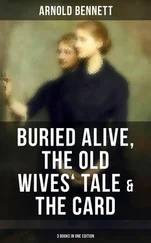Dr. A. T. Schofield, says: "'He is a dull scholar,' it is said, 'who cannot read a man's character even from a back view.' Round a statue of the prince Consort in Edinburgh stand representative groups paying homage to him. If you get a back view of any of these you can see unconscious mind impressed on matter, and can tell at once the sailor or soldier, peasant or scholar or workman. Look at the body and face of a man when the mind is gone. Look at the body of a man who has lost his self-respect. Look at the body of a thief, of a sot, of a miser. Compare the faces and expressions of a philanthropist, of a beggar, of a policeman, of a scholar, of a sailor, of a lawyer, of a doctor, of a shop-walker, of a sandwich man, of a farmer, of a successful manufacturer, of a nurse, of a refined girl, of a servant, of a barmaid, of a nun, of a ballet dancer, of an art student, and answer to yourself these two questions: First, are these different expressions of body and face due essentially to physical or psychical causes? And, secondly, do these psychical causes act on the facial and other muscles in consciousness or out of consciousness. The only possible answers to these two questions leave us with this fact, were no other proof possible, that we each have within us an unconscious psychical power (here called the unconscious mind) which has sufficient force to act upon the body and display psychical conceptions through physical media."
It is impossible for us (at least by any of the five senses) to peer into the mental chamber of other men and there read the record of their character , or to interpret the combination of Human Nature therein moulded and formed. But nevertheless we are not balked in our desire, for by learning to interpret the outward signs of personality we may arrive with a wonderful degree of success at an understanding of the character, mind, or Human Nature in others. From the seen Outer we may deduce the unseen Inner. We may discern the shape of that which is concealed, by observing the form of the covering which hides it from sight. The body, like the fabled veil of the goddess, "conceals but to reveal."
CHAPTER IV
THE TEMPERAMENTS
Table of Content
The student of Human Nature soon discovers that among men, as among the animals, there is to be observed a great variety of "quality," and various classes of "temperament." Among cattle we notice great differences of form which differences indicate certain qualities inherent in the beast. Certain qualities are recognized by their outward forms as being indicative of sturdiness, staying-qualities, strong vitality, etc., which render their possessor valuable for draught oxen. Other qualities indicate the value of another animal for meat producing. Others, the production of large quantities of milk. Others, prolific breeding. And, so on, each set of qualities being recognized by its outward form and being taken into consideration by breeders. In the same way, breeders recognize certain qualities in horses which they take advantage of in breeding for the strength of draught horses; the speed of thoroughbred runners and trotters; the docility and gentleness of driving horses and saddle animals. The draught horse and the thoroughbred runner or trotter may be easily distinguished by the eye of the average person, while it requires the eye of the expert to distinguish other points and signs of quality which prove the existence of certain traits of temperament in the animal. The same is true in the case of chickens and other fowls. Some types are adapted for laying, others for meat purposes, others for gameness, etc. Not only the physical qualities but also the temperamental traits of the beast or bird are distinguished by the expert, and are taken advantage of in breeding to develop and evolve the indicated trait or quality.
Nearly anyone may distinguish the temperamental difference between the savage dog and the affectionate one—between the vicious horse and the docile one. We know at once that certain dogs may be approached and others kept at a distance—that certain horses are safe to ride or drive, and that others are unsafe and dangerous. A visit to a horse and cattle show, or a poultry and pigeon exhibition, will show even the most skeptical person that Inner States manifest in Outer Form. And a little further study and observation will show that what is true of these lower animals is likewise true of the human being. Men, like animals, may be intelligently and scientifically classified according to the general "quality" or "temperament." While each individual is different in a way from every other individual, nevertheless, each individual belongs to a certain class and may be labelled accordingly. A few outward signs will indicate his class, and we may confidently expect that he will manifest the leading qualities of that particular class.
The first classification of the individuals of the human race is that of Quality . Independent of the various temperaments, although in a way related to them, we find the various degrees of Quality manifested by different individuals. "Quality" may be defined as the "degree of fineness ." It is that which we call "class" in race-horses; "breed" in other animals and often "blood" in men and women. Perhaps one may understand the classification better if he will recall the differences apparent between the mongrel cur and the highbred dog; the "scrub" horse and the thoroughbred; the common cow and the carefully bred Alderney or other choice variety; the ordinary barnyard fowl and the prize-winner at the poultry show. It is an intangible but real and readily recognized difference, which however is almost impossible to convey by words.
Men and women of the highest Quality are essentially fine-grained, possessed of fine feelings, refined natures, high tastes, and manifest the signs of true natural refinement and culture, which cannot be successfully imitated by those who have acquired merely the artificial manner and the outward polish. One may possess Quality in a high degree and still be ignorant of the forms and little manners of so-called "polite society," and yet will be recognized as one of "Nature's noblemen," and as a "natural gentleman."
Descending the scale we find lessening degrees of the manifestation of Quality, until, finally we reach the lowest degree of the scale, that of low Quality. In this lowest degree we find individuals showing all the outward signs of being coarse-grained, vulgar, of low tastes, brutal instincts, and manifesting the signs of lack of refinement and culture. Persons of low Quality are found in all walks of life. Some of those possessing wealth and education belong to this class, and are never able to counterfeit the reality. Quality is a matter of "soul," and not of wealth, education or material advantages. A greyhound and a hyena give us animal symbols of Quality, high and low.
We meet many instances in which the individual is of too high Quality for his environment, occupation or place in life. Such individuals suffer keenly and are to be pitied. They incline toward high ideals and are wounded and discouraged by the grossness which they see on all sides. Those individuals of an average degree of Quality of course fit into the usual environment far better than those above or below them in the scale. We also meet individuals of low Quality in surroundings in which they are out of place—we see many instances of "pigs in the parlor." These individuals, however, find it much easier to descend to their own level, than it is for the high Quality individuals to ascend to theirs. The coarse man finds but little trouble in meeting with boon companions whose tastes are harmonious to his. The person of extremely high Quality may be said to have been born before his time, while those of the lowest Quality are atavistic and born after their time. Remember, always, that Quality is an attribute of "soul," and not of birth, wealth, or even of education. We may find many "gentlemen" of humble birth, small means and limited education; and also many "educated pigs" of high lineage and full coffers.
Читать дальше












